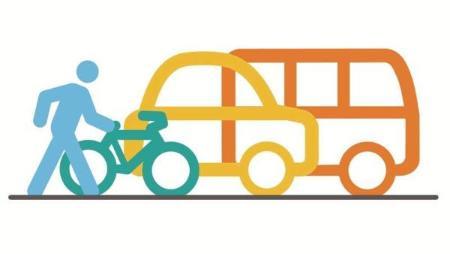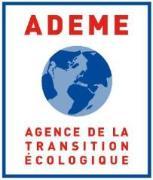The mobility plan: a business travel solution
Introduction and definition
February 2018
Agence pour l’Environnement et la Maîtrise de l’Energie (ADEME)
Since 1 January 2018, companies with at least 100 employees on a single site have been required to set up a mobility plan. The purpose of the mobility plan is to improve the day-to-day mobility of employees and facilitate the use of public transport, active modes of transport, car-pooling and less-polluting vehicles. In addition to the obligation to promote energy and ecological transition, it is in the interests of every company to promote better organisation of the travel generated by its activity. The mobility plan represents an opportunity for economic and environmental performance, and also helps to improve employee well-being.
To download : plan-mobilite-entreprise.pdf (3.9 MiB)
What is a mobility plan?
The Company Travel Plan, also known as the P.D.E. or mobility plan, is a solution for improving business-related travel.
The actions taken under the P.D.E. help to reduce the number of journeys made by employees, offer an alternative means of transport to the car and help to protect the environment by emitting less CO2.
Companies that implement this project benefit from financial advantages.

Who can benefit from the mobility plan?
The E.M.P. offers companies, local authorities, administrations, hotels and airports the opportunity to better manage their employees’ journeys. This eco-mobility approach concerns not only employees, but also customers, suppliers and visitors who need to reach an address that is not served by public transport, forcing them to use their own cars. Schools and universities are also concerned by sustainable mobility.
In order to achieve a sustainable mobility solution, a means of transport other than the private car must therefore be offered.
Law on the implementation of the mobility plan

Article 51 of the law of 17 August 2015 on the mobility law concerns the energy transition. It requires any company with more than 100 employees working in the same place and located within an urban travel plan to draw up a mobility plan by 1/01/2018 in order to improve the eco-mobility of its employees. Each company must submit its mobility plan to the urban travel plan organising authority.
Setting up the mobility plan
There are several stages involved in setting up a mobility plan:
1) Preparing the project:
companies are regularly faced with a lack of parking space for private cars, delays caused by their employees’ journeys and high costs when they have company cars. The primary task of the companies concerned is therefore to analyse the transport and travel options available to their employees. Once the decision has been taken to move the company towards sustainable transport, a company project manager is appointed to monitor the project.
2) Diagnosis:
analyse the impact on the environment. Identifying the strengths and weaknesses of the company’s transport services enables it to identify areas for improvement. The company arranges for a carbon audit to be carried out, which records greenhouse gas emissions. Recommendations are then made. By taking part in an environmental policy, the company or public authority gives a good impression of itself.
3) Action plan:
the action plan implemented consists of providing soft mobility solutions so that private cars are no longer used. Each company finds its own solutions. These can include the creation of a pedestrian kit with mackintosh and umbrella, a cycling kit including a helmet, reflectors and even a bicycle, the installation of a bicycle garage, encouraging public transport by paying for a season ticket paid for by the employer, etc.
4) Implementation:
a programme of actions to be carried out according to a timetable must be drawn up, together with a financing plan. Companies can call on the services of a mobility consultant. Initially, the consultant will carry out a diagnosis, propose solutions and set up a company mobility plan tailored entirely to the company’s needs.
5) Follow-up:
as the Company Mobility Plan progresses, it is essential to assess how employees feel, in order to identify their needs and subsequently adjust the actions already implemented.
Financial assistance for the project
Various forms of financial assistance are available to help companies with their company travel plan project. ADEME (Agence De l’Environnement et de la Maîtrise de l’Énergie) provides technical and financial support to obtain the necessary partners. The Île de France Regional Council is supporting the implementation of the inter-company mobility plan. For the various studies, a contribution of 50%, up to a maximum of €75,000, is allocated.
For the actions, a maximum contribution of 40%, with a ceiling of €200,000 over three years. For the setting up of project managers, a rate of 50% is allocated, with a ceiling of €230,000 over a maximum of 3 years.
These subsidies can be combined, provided they do not exceed 70% of the total subsidy.